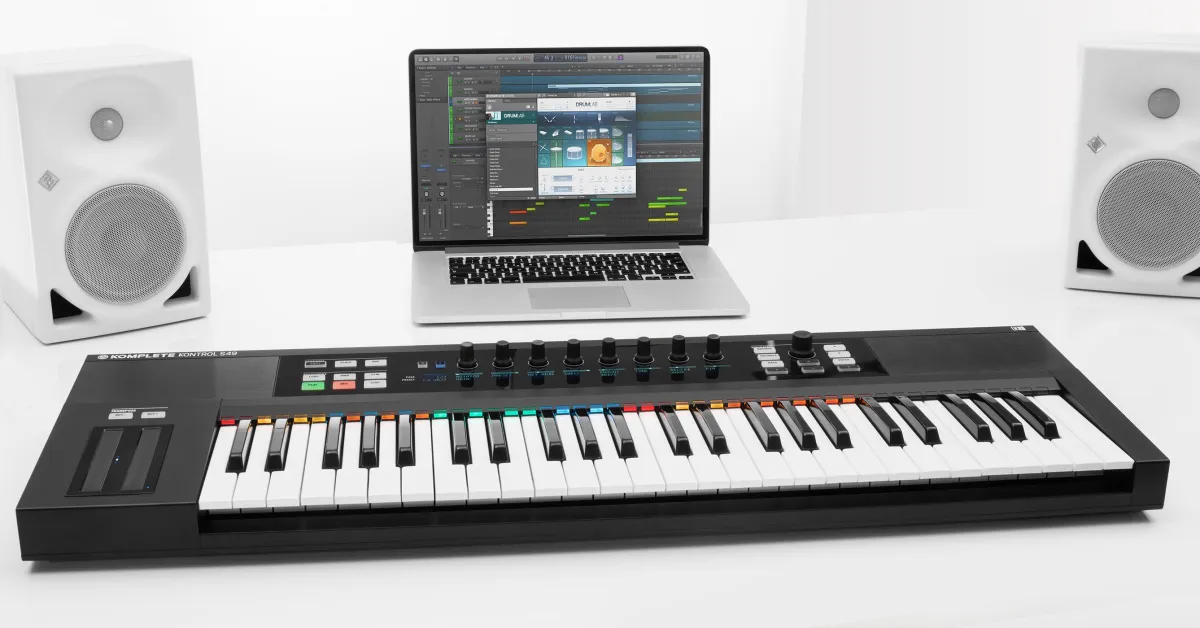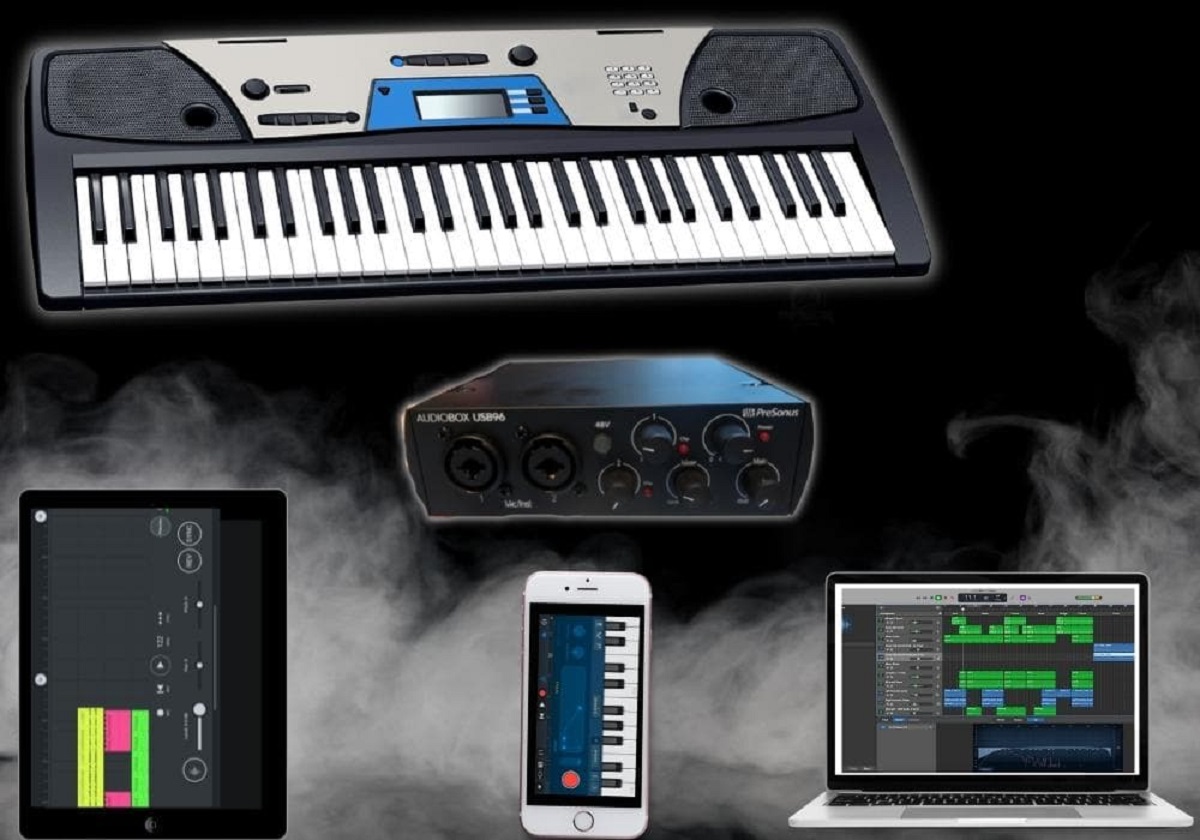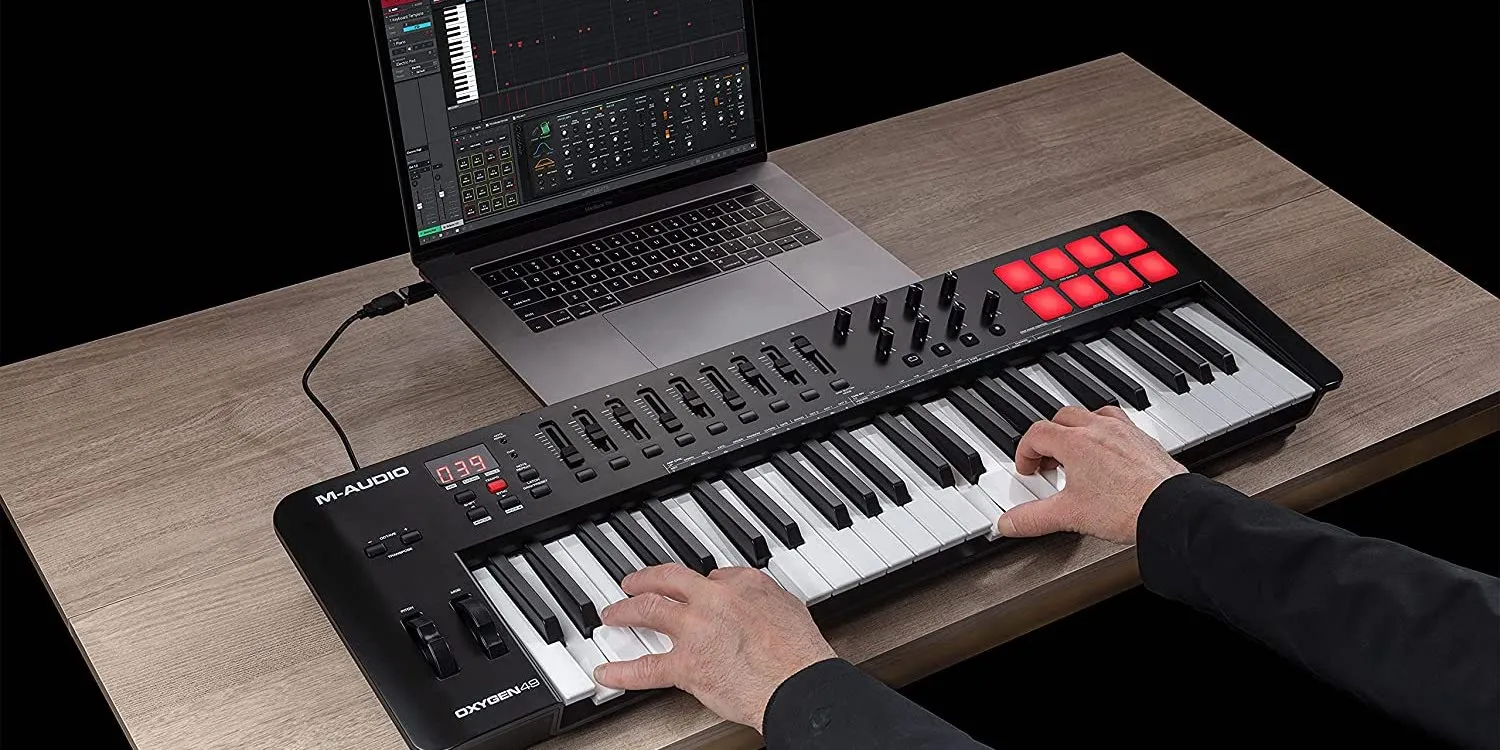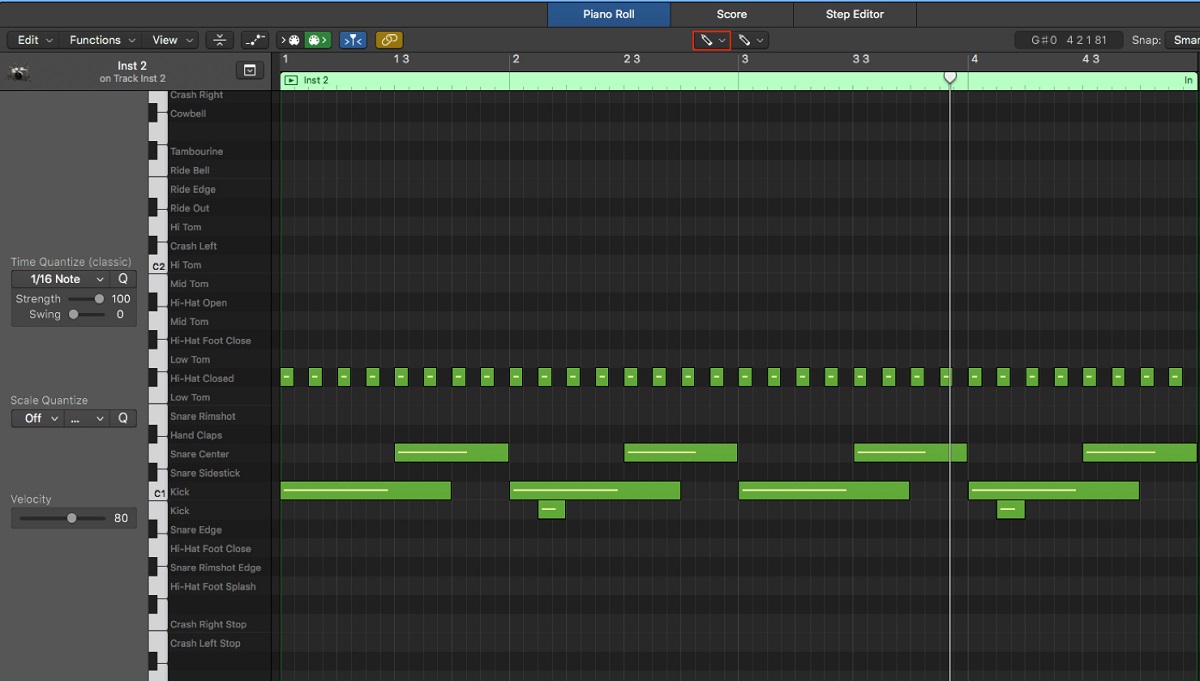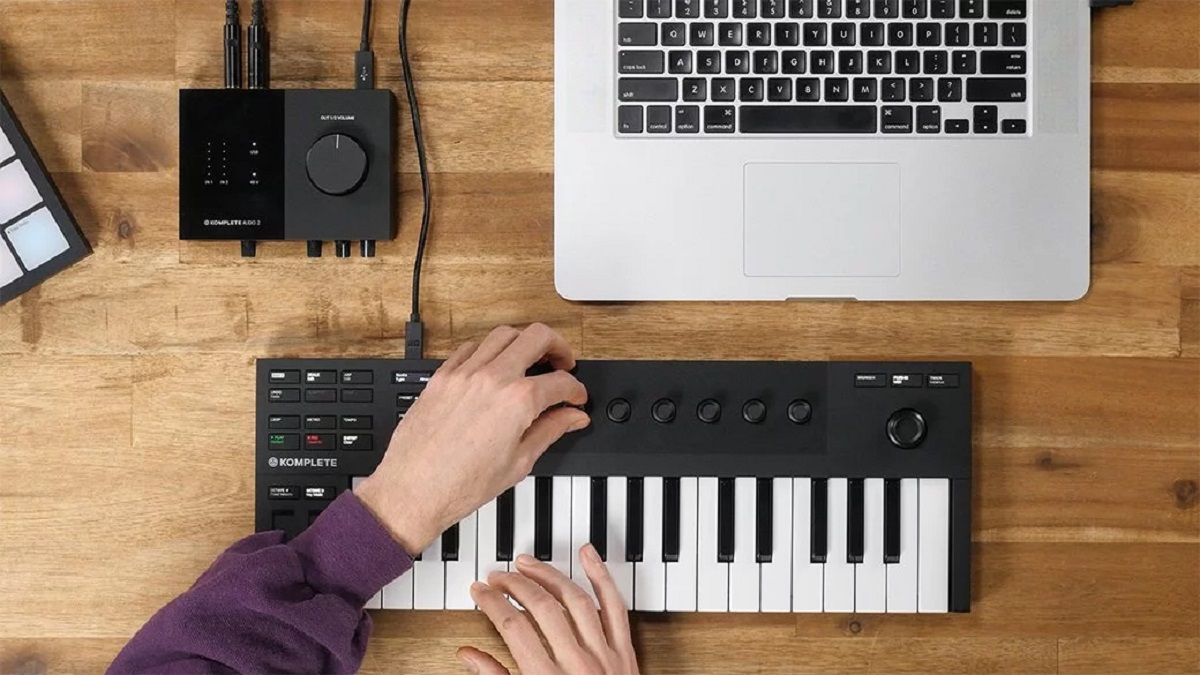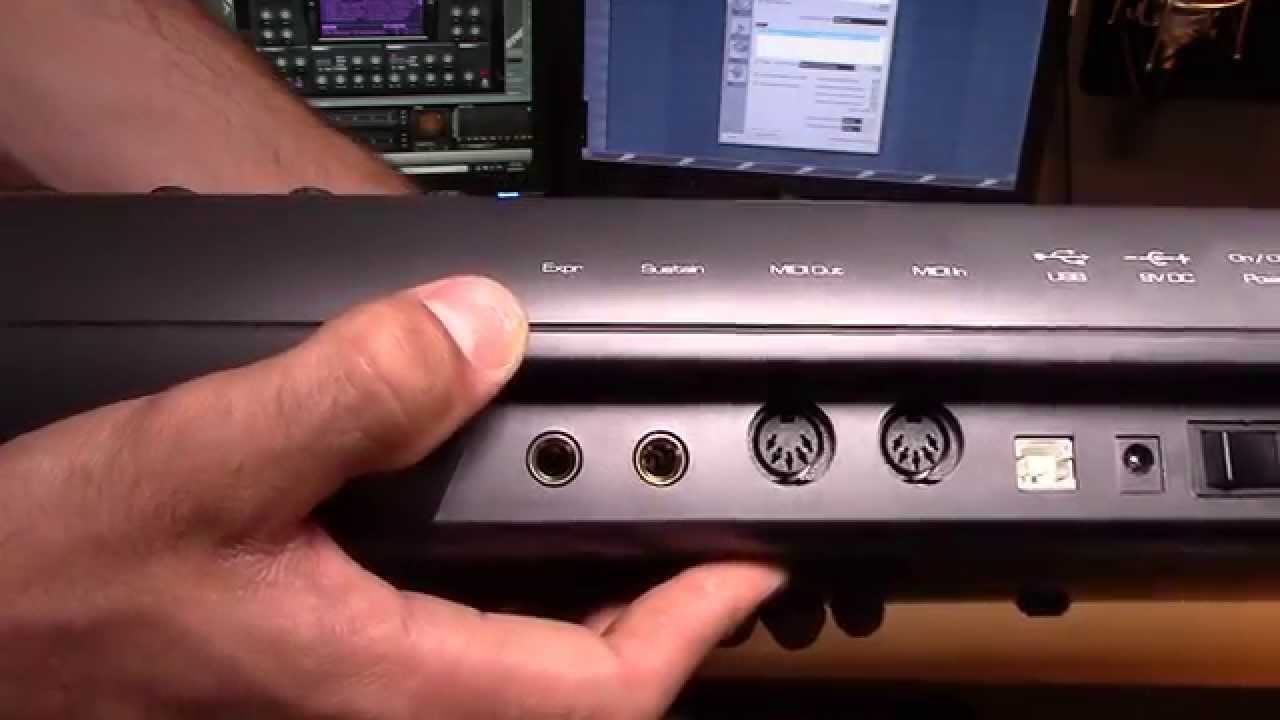Introduction
Introduction
If you're experiencing frustration because you can't hear your MIDI keyboard in Logic Pro X, you're not alone. This common issue can stem from various sources, such as incorrect MIDI connections, Logic Pro X settings, or MIDI keyboard configurations. However, with a systematic approach to troubleshooting, you can often resolve the problem and get back to making music. This guide will walk you through the steps to diagnose and address the issue, helping you regain the sound and functionality of your MIDI keyboard in Logic Pro X.
When your MIDI keyboard fails to produce sound in Logic Pro X, it can disrupt your creative process and hinder your ability to record or perform music. Understanding the potential causes of this issue and knowing how to address them is crucial for any musician or producer utilizing MIDI keyboards with Logic Pro X. By following the steps outlined in this guide, you can identify and resolve the root cause of the problem, allowing you to seamlessly integrate your MIDI keyboard into your music production workflow.
Whether you're a seasoned music producer or a beginner navigating the intricacies of MIDI technology, troubleshooting MIDI input issues in Logic Pro X can be a challenging but ultimately rewarding endeavor. By delving into the intricacies of MIDI connections, Logic Pro X settings, and MIDI keyboard configurations, you can gain valuable insights into the functionality and compatibility of your equipment, empowering you to overcome obstacles and optimize your music production environment.
In the following sections, we will explore the step-by-step process of diagnosing and troubleshooting the inability to hear your MIDI keyboard in Logic Pro X. By examining MIDI connections, Logic Pro X settings, and MIDI keyboard configurations, you can systematically address potential issues and restore the audio output from your MIDI keyboard within Logic Pro X. Let's delve into the essential steps to uncover and resolve the root cause of this common MIDI input issue.
Checking MIDI Connections
When troubleshooting the inability to hear your MIDI keyboard in Logic Pro X, it’s essential to start by examining the MIDI connections to ensure that all components are properly linked and configured. Faulty or incorrect MIDI connections can often be the culprit behind the lack of sound output from your MIDI keyboard. Follow these steps to meticulously assess and rectify any potential issues with your MIDI connections:
- Physical Inspection: Begin by visually inspecting the physical MIDI connections between your keyboard, audio interface, and computer. Ensure that the MIDI cables are securely plugged into the appropriate input and output ports on both the keyboard and the audio interface. Additionally, verify that the audio interface is correctly connected to your computer via USB or other applicable connections.
- Testing MIDI Cables: If visual inspection doesn’t reveal any apparent issues, consider testing the MIDI cables with alternative equipment to rule out the possibility of cable malfunctions. Sometimes, a faulty MIDI cable can disrupt the communication between your keyboard and the audio interface, leading to a lack of sound output in Logic Pro X.
- Audio Interface Configuration: Check the audio interface settings in Logic Pro X to ensure that the MIDI input and output ports are correctly configured. Navigate to the audio preferences and verify that the MIDI input and output settings correspond to the physical connections established between your MIDI keyboard and the audio interface.
- Driver Updates: It’s crucial to ensure that your audio interface drivers are up to date. Visit the manufacturer’s website to download and install the latest drivers for your specific audio interface model. Outdated drivers can lead to compatibility issues and hinder the proper functioning of MIDI connections within Logic Pro X.
By meticulously examining and addressing potential issues with your MIDI connections, you can eliminate common causes of the inability to hear your MIDI keyboard in Logic Pro X. Once you’ve verified the integrity and configuration of your MIDI connections, you can proceed to the next phase of troubleshooting, focusing on the settings within Logic Pro X itself.
Checking Logic Pro X Settings
After ensuring that your MIDI connections are intact, the next crucial step in troubleshooting the issue of not hearing your MIDI keyboard in Logic Pro X involves examining the software settings within Logic Pro X. These settings play a pivotal role in determining how MIDI input is processed and routed, directly impacting the audio output from your MIDI keyboard. Follow these steps to meticulously assess and adjust the Logic Pro X settings related to MIDI input:
- MIDI Preferences: Access the MIDI preferences within Logic Pro X and verify that the MIDI input from your keyboard is correctly recognized. Ensure that the MIDI input port corresponding to your keyboard is selected and active within Logic Pro X. Additionally, check for any conflicting MIDI assignments that might impede the reception of MIDI data from your keyboard.
- Instrument and Track Selection: When working with MIDI keyboards in Logic Pro X, it’s essential to confirm that the appropriate instrument and track are selected to receive MIDI input. Check the instrument assignment and MIDI channel settings for the track to ensure that it aligns with the MIDI output from your keyboard. Additionally, verify that the track’s input settings are configured to receive MIDI data from the designated input port.
- Monitoring and Output: Review the monitoring and output settings for the MIDI track in Logic Pro X to ensure that the audio output is routed to the desired destination, such as your audio interface or built-in output. Adjust the monitoring and output configurations as needed to enable the playback of MIDI input from your keyboard through the designated audio output channels.
- Software Instrument Setup: If you’re utilizing software instruments in Logic Pro X, double-check the instrument setup to confirm that the MIDI input from your keyboard is triggering the intended software instrument. Verify that the MIDI input is properly mapped to the software instrument’s parameters, allowing for seamless control and sound generation.
By meticulously examining and adjusting the Logic Pro X settings related to MIDI input, you can troubleshoot and resolve potential software-related issues that may impede the audio output from your MIDI keyboard. Once you’ve confirmed the correctness of the Logic Pro X settings, proceed to the next phase of troubleshooting, focusing on the configuration and settings of your MIDI keyboard itself.
Checking MIDI Keyboard Settings
As you continue troubleshooting the inability to hear your MIDI keyboard in Logic Pro X, it’s essential to examine the settings and configurations specific to your MIDI keyboard. These settings directly influence how the keyboard communicates with external software and hardware, including Logic Pro X and audio interfaces. By meticulously assessing and adjusting the MIDI keyboard settings, you can address potential issues that might be hindering the proper transmission of MIDI data and audio output. Follow these steps to thoroughly inspect and configure the settings on your MIDI keyboard:
- MIDI Channel and Mode: Verify that the MIDI channel and mode settings on your keyboard align with the intended MIDI input configuration within Logic Pro X. Ensure that the MIDI channel selected on the keyboard corresponds to the MIDI channel assigned to the receiving track in Logic Pro X. Additionally, confirm that the keyboard is operating in the appropriate MIDI mode, such as “Normal” or “MIDI over USB,” based on your setup.
- Velocity and Aftertouch: If your MIDI keyboard features velocity sensitivity and aftertouch capabilities, check the settings related to these parameters. Ensure that the velocity response and aftertouch sensitivity are configured to your preference, as these settings can impact the dynamics and expressiveness of the MIDI data transmitted to Logic Pro X.
- Local Control and MIDI Thru: Examine the local control and MIDI Thru settings on your keyboard to prevent potential MIDI feedback loops and ensure that MIDI data is transmitted and received as intended. Adjust the local control and MIDI Thru configurations based on your specific setup and the interaction with Logic Pro X and external devices.
- Assignable Controls: If your MIDI keyboard includes assignable controls such as knobs, sliders, or buttons, review the assignments and mappings to confirm that these controls are properly configured to interact with software parameters in Logic Pro X. Adjust the assignable control settings as needed to enable seamless integration and control over software instruments and effects.
By meticulously examining and adjusting the settings on your MIDI keyboard, you can address potential hardware-specific issues that may affect the transmission of MIDI data and audio output within Logic Pro X. Once you’ve verified the correctness of the MIDI keyboard settings, proceed to the next phase of troubleshooting, focusing on additional measures to address MIDI input issues effectively.
Troubleshooting MIDI Input Issues
When encountering challenges with MIDI input in Logic Pro X, comprehensive troubleshooting is instrumental in identifying and resolving underlying issues that may impede the proper functionality of your MIDI keyboard. By systematically addressing potential sources of disruption, you can effectively restore the seamless transmission of MIDI data and audio output within Logic Pro X. Consider the following troubleshooting steps to diagnose and resolve MIDI input issues:
- Software Updates: Ensure that Logic Pro X and any relevant software drivers or firmware for your MIDI keyboard and audio interface are updated to the latest versions. Software updates often include bug fixes and compatibility enhancements that can mitigate MIDI input issues.
- Compatibility Checks: Verify the compatibility of your MIDI keyboard with Logic Pro X and your operating system. Consult the manufacturer’s specifications and support resources to confirm that your MIDI keyboard is fully compatible with the software and hardware environment in which it is being utilized.
- USB and Power Considerations: If your MIDI keyboard connects via USB, test alternative USB ports on your computer and ensure that the keyboard is receiving adequate power. Insufficient power supply or USB port malfunctions can disrupt the MIDI communication between the keyboard and your computer, leading to input issues.
- Signal Flow Analysis: Conduct a comprehensive analysis of the signal flow from your MIDI keyboard to Logic Pro X, including the audio interface and any intermediary devices. Identify and troubleshoot any potential signal interruptions, latency issues, or signal degradation that may affect the transmission of MIDI data and audio output.
- Reset and Calibration: If your MIDI keyboard offers reset or calibration options, consider performing a reset or recalibration procedure as recommended by the manufacturer. Resetting the keyboard’s internal settings or recalibrating its components can rectify underlying issues that impact MIDI input performance.
- Diagnostic Tools: Utilize diagnostic tools and MIDI monitoring software to track the flow of MIDI data from your keyboard to Logic Pro X. These tools can provide valuable insights into potential data transmission errors, MIDI channel conflicts, or irregularities in the MIDI input signal.
By methodically troubleshooting MIDI input issues and addressing potential software, hardware, and signal flow-related challenges, you can enhance the reliability and performance of your MIDI keyboard within Logic Pro X. Implementing these troubleshooting measures empowers you to overcome obstacles and optimize the functionality of your MIDI setup, fostering a seamless and productive music production environment.
Conclusion
Resolving the challenge of not hearing your MIDI keyboard in Logic Pro X requires a systematic approach that encompasses thorough examination and adjustment of MIDI connections, Logic Pro X settings, and MIDI keyboard configurations. By diligently addressing potential sources of disruption and implementing targeted troubleshooting measures, you can effectively restore the audio output and MIDI functionality of your keyboard within Logic Pro X.
Throughout this troubleshooting process, it’s essential to maintain a keen eye on the physical and digital components involved in your MIDI setup. From inspecting MIDI connections and audio interface settings to configuring MIDI keyboard parameters and addressing software-related considerations, each facet plays a crucial role in ensuring the seamless transmission of MIDI data and the generation of audio output in Logic Pro X.
As you navigate the intricacies of troubleshooting MIDI input issues, remember to leverage resources provided by the manufacturers of your MIDI keyboard, audio interface, and music production software. Manufacturer specifications, user manuals, and support resources can offer valuable insights and guidance tailored to your specific equipment, aiding in the resolution of MIDI-related challenges.
By embracing a proactive and meticulous approach to troubleshooting, you empower yourself to overcome obstacles and optimize the performance of your MIDI keyboard within Logic Pro X. As you implement the troubleshooting measures outlined in this guide, remain patient and methodical, allowing ample time for each adjustment and evaluation to take effect.
Ultimately, the process of troubleshooting MIDI input issues in Logic Pro X not only fosters a deeper understanding of your music production setup but also equips you with the skills to address similar challenges in the future. By honing your troubleshooting proficiency, you cultivate a resilient and adaptable approach to leveraging MIDI technology in your creative endeavors, enhancing your music production experience and capabilities.









